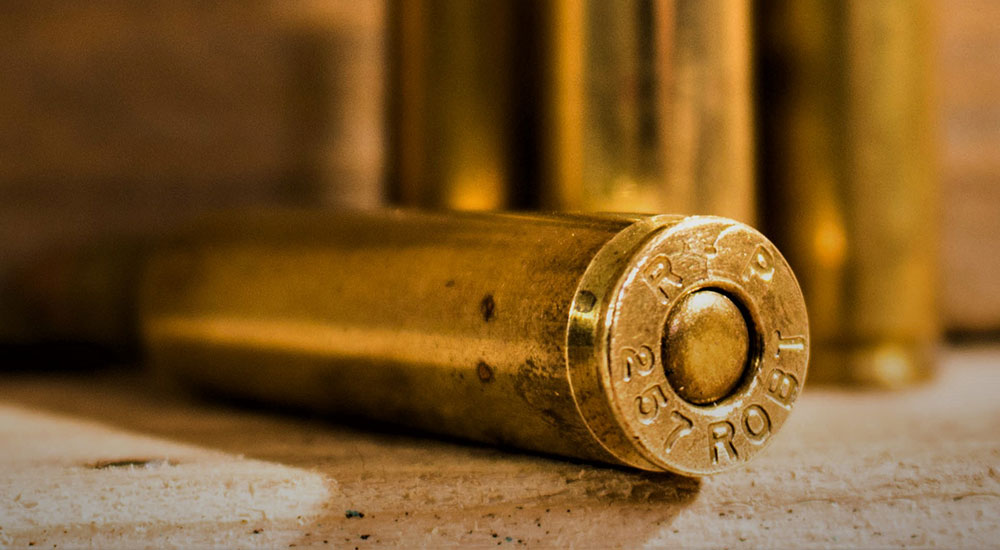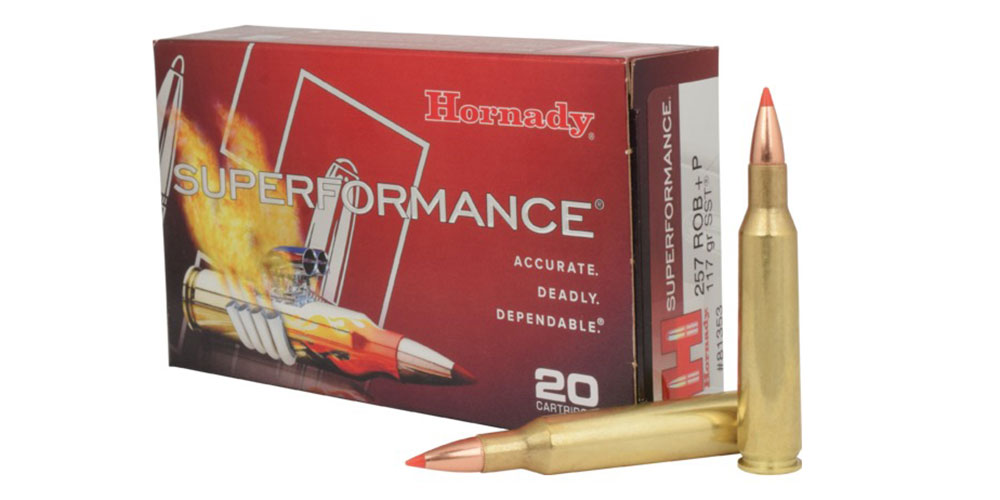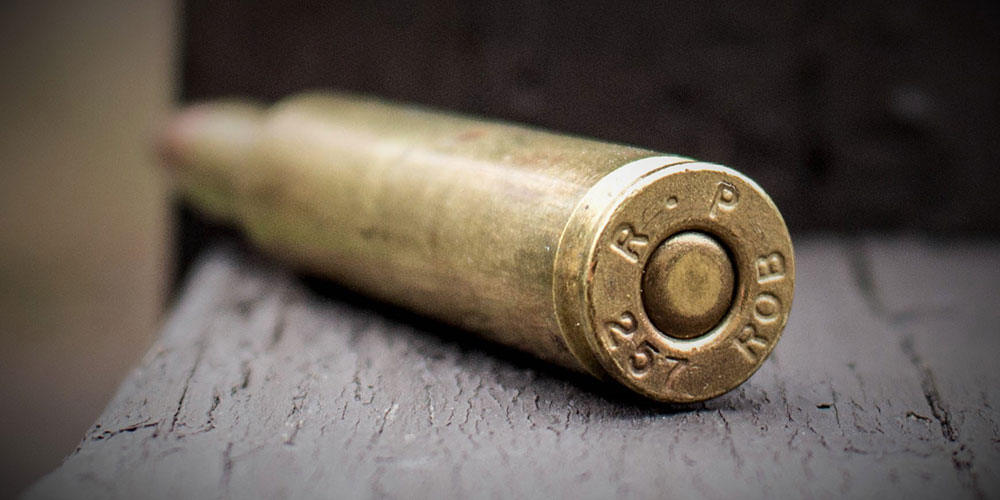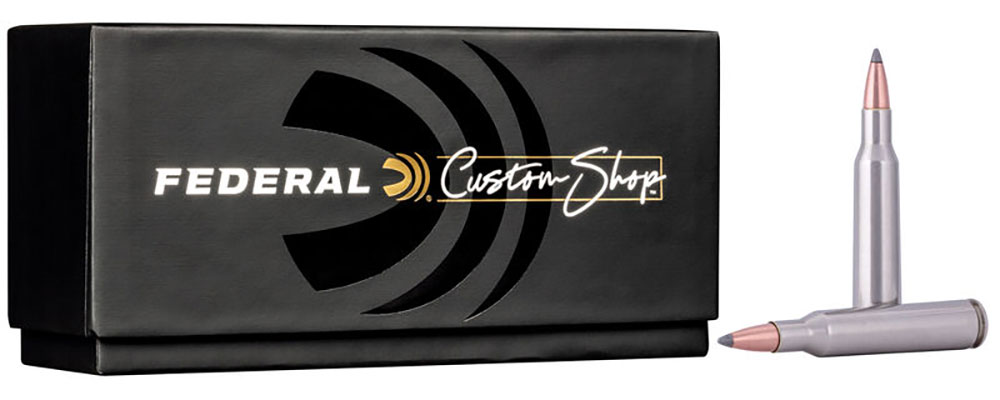Ol’ Bob. Mention that name around a campfire discussion, and you’ll have the attention of those hunters with a bit of snow on the roof, though the younger generations may look a bit puzzled. Bob certainly has lost popularity of late, but those who still take him afield each fall just quietly go about their business, accurately placing shots and taking game without destroying any more meat than is necessary. Perhaps the recent infatuation with 6.5mm cartridges will prove to be the nail in the coffin for Bob, but then again, we may just see a resurgence in the classic cartridge; after all, we’re still shooting .30-30s and .45-70s.

America’s love of .25-caliber cartridges goes back well over a century, hearkening back to the .25-20 and .25-35 of the late 19th century, and the .250-3000 Savage of the early part of the 20th century. Wildcatters went crazy in the early decades of the 1900s, experimenting with the great cartridges developed right around the turn of the century, like the .30-06 Springfield, .300 Savage and 7x57mm Mauser. Townsend Whelen, A.O. Neider and Elmer Keith all had sound designs which became legitimate cartridges, as did Ned Roberts. Roberts certainly did have a case based on the 7x57mm Mauser necked down to hold .257-inch diameter bullets, but by the time Remington picked up the cartridge for commercial production in 1934, the dimensions had changed slightly.
Where Roberts’ design had a 15-degree shoulder, Remington reverted back to the 20-degree, 45-minute shoulder of the parent case. A case length of 2.235 inches and a cartridge overall length of 2.780 inches allow the Bob to fit easily in a long-action rifle receiver, and the 1:10” twist rate will stabilize bullets up to 120 grains. The cartridge was offered in the Remington Model 30 and the Winchester Model 54, not to mention being one of the first chambering in the Winchester Model 70 upon its release in 1936. According to Philip B. Sharpe’s classic book Complete Guide to Handloading (Third Edition, Second Revision), listed the specs for the .257 Roberts were an 87-grain bullet at 3100 fps, a 100-grain bullet at 2800 fps and a 117-grain bullet at 2550 fps.

The round nosed 117-grain bullet was a good choice for deer and similar-sized game, but wasn’t exactly the most efficient choice for downrange work. A couple decades after its debut, the .257 Roberts would be challenged by the .243 Winchester and Remington’s own .244, which is ironically based on the Bob and its 7x57mm Mauser father. The late 1940s and 1950s saw a huge wave of new cartridges and the Bob’s popularity started to wane. Simply put, the cartridge was outshined by the likes of the .280 Remington, .308 Winchester, and .284 Winchester. But the 1980s would give the Bob a new lease on life, as the cartridge would receive a facelift in the guise of the .257 Roberts +P ammunition, loaded to a higher pressure than the original ammunition, and changing the profile of the cartridge.
In the +P variety, the .257 Roberts will push the 100-grain bullets at 3000 fps and the 117-grain bullets at 2945 fps, nipping at the heels of the speedy .25-06 Remington in its regular guise. And, even in its +P guise, the .257 Roberts is easy on the shoulder, making it a wonderful choice for deer and pronghorn antelope at sane hunting ranges; the Hornady 117-grain Superformance load will retain over 1,000 ft.-lbs. of energy at 400 yards. That load—when zeroed at 200 yards—will print 7.3 inches low at 300 yards, and 21.4 inches low at 400 yards, giving a trajectory highly reminiscent of the .308 Winchester or .30-06 Springfield.

Recently, rifles chambered for the .257 Roberts include different iterations of the Winchester Model 70, the Ruger Model 77 and No.1 single-shot rifle, and the Kimber Hunter model, in addition to a good number of custom guns. Being based on the 7x57mm Mauser, which is right at home in the 98 Mauser rifle, there are plenty of platforms for a custom rifle which would fit the bill perfectly: namely the multitude of Mauser 98s still available on the used market.
Where it is clear that the choices of factory-loaded ammunition are few, the .257 Roberts is a great choice for those who handload ammunition. Dies are readily available from the major companies including Redding, RCBS, Hornady, Lyman and Lee, and component brass can be made—if needs be—from the plentiful 7x57mm Mauser cases. Nearly all bullet manufacturers make .25-caliber projectiles, as the .25-06 Remington and .257 Weatherby Magnum still have devout followers. Any good large rifle primer will fit the bill—I’ve had great results with both CCI 200 and Federal’s 210—and I’d look to medium-burning rifle powders like IMR 4064, Hodgdon’s VARGET and H380, Alliant’s RL15, all the way to the slower powders like IMR 4350 and H414, to the slowest choices like IMR 7828 with the heavier bullet choices.

Has the sun set on the .257 Roberts? And will we see this excellent design fade into absolute obscurity? I, for one, hope the answer to both questions is a resounding no. The .257 Roberts is my favorite of the quarter-bore cartridges, giving an excellent blend of striking power and user friendliness. The 6.5mm cartridges offer an advantage of heavier bullet weight—the Creedmoor tops at 140 grains but the 6.5×55 Swede and 6.5-284 Norma happily handle the 156-grain slugs—and have been a real threat to the .25-calibers of late. But, the beauty of being an American hunter and gun owner is that we can own all sorts of different rifles, cartridges and calibers, and that will be an important factor in keeping the .257 Roberts alive. Kudos to Ned Roberts for the initial design, as well as to Remington who has always had the ability to recognize the best wildcats and bring them to the shooting masses. If you have a .257 Roberts, see if you can get it out in the field, and if you have the opportunity to buy a rifle so chambered, I suggest the same. I’ll wager you’ll become a fast fan of the cartridge.
Looking for previous installments of our “Behind the Bullet” series? We’ve got you covered.• 7mm Weatherby Magnum• .300 PRC• .350 Rigby Magnum• .450 Nitro Express• .17 Hornet• 7mm STW• 6.8 Western• .375 Ruger• .223 Remington• 6.5×55 Swedish• .416 Remington Magnum• .300 Winchester Short Magnum• 28 Nosler• 6.5 PRC• .22 WMR• .458 Winchester Magnum• .22 Hornet• .280 Ackley Improved• .240 Weatherby Magnum• .458 Lott• .264 Winchester Magnum• .348 Winchester• .33 Nosler• .260 Remington• .30-30 Winchester• .416 Rigby• .358 Norma Magnum• .22 LR• 7mm-08 Remington• 8mm Remington Magnum• .338 Federal• .224 Valkyrie• .338-06 A-Square• 9.3x62mm Mauser• .257 Weatherby Magnum• .45-70 Government• .300 H&H Magnum• .25-06 Remington • .30-06 Springfield• 6.5 Creedmoor• .300 Remington Ultra Magnum• 7mm Remington Magnum• .470 Nitro Express• .280 Remington• .300 Winchester Magnum• .270 Winchester• .222 Remington• .45 ACP• .404 Jeffery• .44 Remington Magnum • .41 Remington Magnum• .243 Winchester• .338 Winchester Magnum• .357 S&W Magnum• 6.5-284 Norma• 8×57 Mauser• .38 Smith & Wesson Special• 7x57mm Mauser• 9mm Luger• .35 Whelen• .454 Casull• .375 H&H Magnum• .45 Colt• .22-250 Remington• 10mm Auto• .308 Winchester








